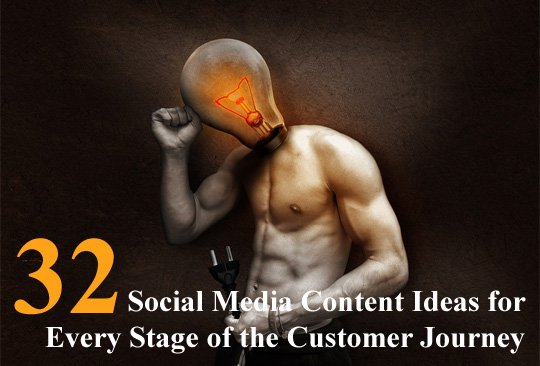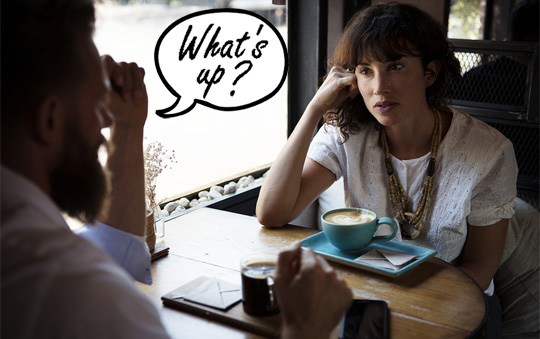Across all content marketing platforms, social media can be considered as the most “human.” In order for social media marketing to be really effective, it should reflect the natural progression of real human relationships.
In marketing jargon, this natural progression is called the customer journey.
There are a number of versions out there, each with a varying number of steps. However, everything still follows this same foundational structure:
Awareness —> Consideration —> Action —> Advocacy
When social content matches the customer journey, social media marketing is elevated into a much strategic form called social selling. This is the practice of making relationship building the core of any sales funnel (which today happens mostly in social media).
Social selling has many benefits:
- Businesses who do social selling enjoy a 61% revenue boost.
- Customers who are active on social media spend 84% more.
- It creates shorter sales cycles and increases the conversion rate of leads to customers.
Clearly, social media content should be more strategically and carefully thought out, cognizant of what people need depending on where they are in the customer journey. Here’s the tricky part: marketers cannot create sequential content based on the customer journey steps because not everyone will be on the same stage. So, the best way to do this is to have a good balance of content that satisfies the content expectations of buyers at these different steps.
Marketers who are posting at least 4 times a day can have one post for each of the 4 stages.
That said, what content can be used to engage buyers at each stage of the customer journey? The possibilities range from the most essential to the most creative executions.
But First, Listen
Before writing a single word, marketers need to first and foremost, listen.
One common mistake even veteran marketers occasionally make is assuming that the content that they like is also what their audience would want to read. Social listening is an important step in social selling and creating content that is aligned with the customer journey. Once you know who your ideal content avatar is and what messages they will respond to at the different stage of the buyer’s journey, then you can proceed with executing the actual content.
With that out of the way, here are 32 social selling content ideas that can be used to connect with buyers in the customer journey.
Awareness Stage
Content expectations: At this stage, buyers are not aware that they have a problem or an unfulfilled desire. If they know it, they cannot fully articulate or define what it is. When browsing through social media, they are looking for someone who is experiencing the same. They are also looking for an authoritative resource who can provide them with more information so they can fully understand their problem or desire.
The role of social content: Social marketers are seen as information providers at this point, the relationship with the audience is purely educational. Social content is meant to first and foremost, grab the attention of the buyers. Then, it should be able to establish a brand as a preferred and preeminent source of high value, useful information on a specific topic. Social content should strive for virality to get the most reach and engagement.
Suggested Social Content For The Awareness Stage
- Curated content from influencers and experts in the industry.
- Link to evergreen and best blog posts/content to build credibility and establish authority.
- Gated content to premium content to generate marketable leads.
- Infographics, GIFs, and other visual content to catch buyers’ attention and engage.
- Scheduled takeovers from key influencers.
- Actionable tips as standalone posts.
- Live events to answer the most common questions buyers ask at the awareness stage.
- Relatable life tips (see example below from Adidas).
- Behind the scene content into the lives of the people in the company.
- Emotionally engaging stories.
When life gives you lemons, hydrate.
Recover and replenish with fresh recipes in the #adidasALLDAY App: https://t.co/p6wvEkuXYJ (US only). pic.twitter.com/8St95u4zOz— adidas (@adidas) July 7, 2017
Success Indicators: Engagement, Impressions, Reach, Clicks, Shares, Follower & Fan Growth
Consideration Stage
Content expectations: The need or desire is already well-defined among buyers and they know what they want to achieve. As they are considering what solution or which solution provider they should choose, they are comparing benefits as well as other pre-purchase considerations such as price points, level of support, etc.
The role of social content: According to McKinsey Consulting: “Brands in the initial-consideration set can be up to three times more likely to be purchased eventually than brands that aren’t in it.” From educational, social content becomes more transactional, without any of the old school car salesman tactics. Social content should still provide value, but it should effectively transition the role of a business to its audience from an information-provider to a solutions provider.
Suggested Social Content For The Consideration Stage
- Mini buyer’s guides/tips as standalone posts.
- Live product tours/demos.
- Live events to address frequently asked questions about the products/services.
- Links to downloadable checklists and cheat sheets.
- Links to white papers, commissioned research, and other authoritative proprietary content.
- Curated stories from the media featuring a product/service (check out example below from IBM).
- Using chatbots for an automated but still interactive FAQ experience.
- Live interviews with a brand ambassador/advocate.
- Creating challenges that buyers can join to encourage product trial.
- Direct messaging to address unanswered objections buyers might have.
#WithWatson, @GuidingEyes can increase guide dog 🐶 graduation rates. Watch: https://t.co/JA7UTKVajP
— IBM (@IBM) July 27, 2017
Success indicators: Landing page conversion rate from social media, email list growth
Action Stage
Content expectations: Finally, buyers are ready to open their wallets to make a purchase. However, they might have last minute questions or objections that need to be answered before going through with the purchase. They turn to social media once again to validate that the action they’re about to take is the right decision.
The role of social content: Fortunately, if marketers started social selling from the beginning of the customer journey as recommended in this guide, the chances of closing the deal is significantly higher, especially because according to Digital Marketing Magazine, 3 out of 4 customers use social media just before they make a purchase decision. Those who have been exposed to a business’ social media content from the Awareness to the Consideration stage now only need a slight nudge to finalize the sale. At this stage, targeted or re-targeted content to a specific audience segment, those who are ready to buy, is the most effective.
Suggested Social Content For The Action Stage
- Case studies to authoritatively demonstrate the benefits of a product/service.
- Featured customer testimonials and reviews.
- Free trial offers to reduce buying friction.
- Posts featuring discounts/special offers targeted to very specific buyers.
- Posts with upfront pricing, coupled with benefit-driven copy.
- Images and videos that show the product in action.
Success indicators: Conversions directly on social, product pages, trial conversions
Advocacy Stage
Content expectations: For many businesses, the buyer’s journey ends when a purchase is made, missing out on a lot of opportunities to get repeat purchases, referral sales, and positive word of mouth. Customers expect continuous engagement on social media from brands they patronize, with content that reassures them they made the correct decision and helps them make the most out of their purchase.
The role of social content: At this point, social content should be able to foster customer loyalty. For businesses following a subscription model, social content is a big part in increasing customer retention. Social content should create a positive experience after the sale and contribute to turning customers into brand advocates.
Suggested Social Content For The Advocacy Stage
- Provide prompt after-sales service for customers reaching out on public social channels (a recent research found out that only 11% of businesses respond to customer service queries on social media).
- Custom content retargeted to existing customers (which can also be used to upsell them).
- Educate customers on other uses of the product they purchased (see below a great example from Oreo teaching Oreo buyers how to make Oreo cupcakes).
- Create an exclusive Facebook group for customers where they can access exclusive content.
- Encourage customers to submit user-generated content featuring how they’re using your product/service.
- A prominent feature of your biggest fans to boost their stature in the community.
Success indicators: Repeat purchases, retention rate, number of positive reviews
When It Comes To Social Content, Timing Is Everything
Just a quick note. If it was not obvious in the content ideas given above, it’s important to note that in order to be really effective, social content should work in conjunction with other content elements in what is called a content marketing machine. For instance, social content in the Consideration Stage would be shallow if it’s not linking to authoritative content such as white papers, which live outside of social media but are promoted across social networks.
That said, social media is omnipresent in the customer journey. Whether a business’ main goal is to build a social following or working on generating more sales directly from social media, creating content for each stage of the buyer’s journey is the best social selling strategy a business can make.
At the end of the day, social network content engagement is the most dominant online activity today. Future prospects, soon-to-be buyers, current customers, and past clients are on social media. Your content should be able to connect with them across the different stages of the customer journey.
[Main image: Pixabay, Comfreak; FreePik, Business photo created by rawpixel.com – www.freepik.com]
Prafull Sharma is the Founder of content marketing agency
LeadsPanda. He shares tips to 2x your content marketing results on
LeadsPanda blog. Do connect with him on twitter
@prafullsha.

